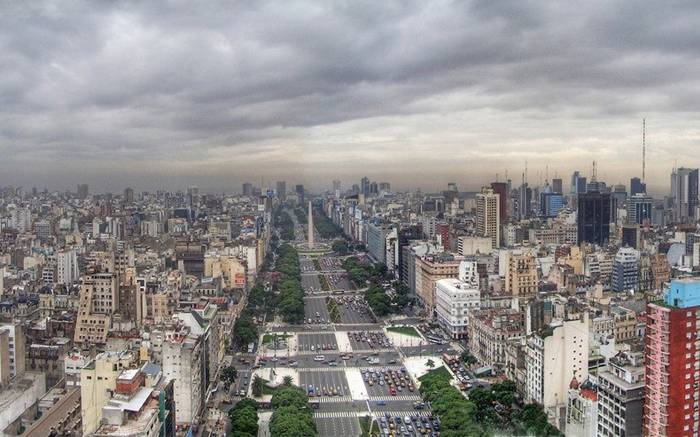Widest Street in the World - 9 de Julio Avenue
38 views
Skip to first unread message
Dhara Shah
Jul 22, 2013, 12:40:49 AM7/22/13
to Dhara Shah

9
de Julio Avenue (or Avenida 9 de Julio, in the local tongue) in
downtown Buenos Aires, Argentina, is not just any street. Nine lanes
wide, with gardened medians between the opposing flow of traffic, this
is the widest street in the world. Only those with a quick pace and long
legs will be lucky to get to the other side before the traffic lights
at the intersection changes. A pedestrian crossing this street usually
requires a few extra minutes and two to three traffic light rotations. 9
de Julio Avenue is only 1 km long but 110 meters wide.
The avenue's
unusual width is because it spans an entire city block, the distance
between two streets in the checkerboard pattern used in Buenos Aires.
The avenue runs to the west of the Río de la Plata waterfront, from the
Retiro district in the north to Constitución station in the south. It
has up to seven lanes in each direction and is flanked on either side by
parallel streets of two lanes each.

The
street runs far in both directions and connects the unique sections of
the metropolis. Some of Buenos Aires’ main landmarks can be seen along
the way; most notably, the Obelisk, that sits in the middle of 9 de
Julio, the original French Embassy, the statue of Don Quixote, the
Teatro Colon and the former Ministry of Communications building - the
only building that sits on the avenue itself at the intersection with
Moreno street.
The avenue was first planned in 1888, with the name of Ayohuma; but the road was long opposed by affected landlords and residents, so work did not start until 1935. Even the French government refused to submit the embassy building for demolition, and local preservationists opposed the move as well, as the building is widely hailed as an architectural masterpiece. The initial phase was inaugurated on 9 July 1937 and the main stretch of the avenue was completed in the 1960s. The southern connections were completed after 1980, when the downtown portion of the tollway system was completed. Clearing the right-of-way for these intersections required massive condemnations in the Constitución area.
The avenue was first planned in 1888, with the name of Ayohuma; but the road was long opposed by affected landlords and residents, so work did not start until 1935. Even the French government refused to submit the embassy building for demolition, and local preservationists opposed the move as well, as the building is widely hailed as an architectural masterpiece. The initial phase was inaugurated on 9 July 1937 and the main stretch of the avenue was completed in the 1960s. The southern connections were completed after 1980, when the downtown portion of the tollway system was completed. Clearing the right-of-way for these intersections required massive condemnations in the Constitución area.
Reply all
Reply to author
Forward
0 new messages


